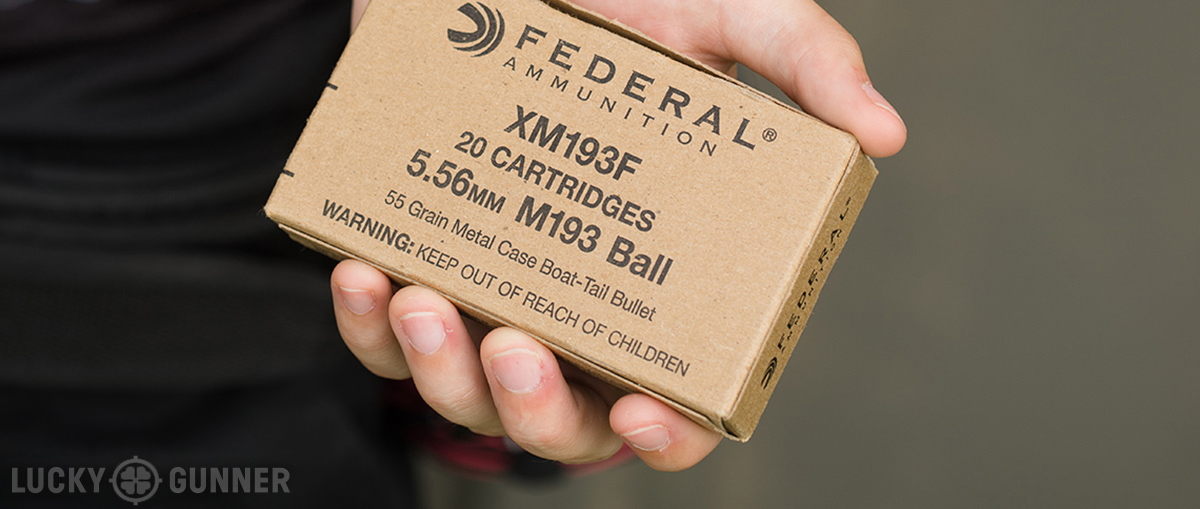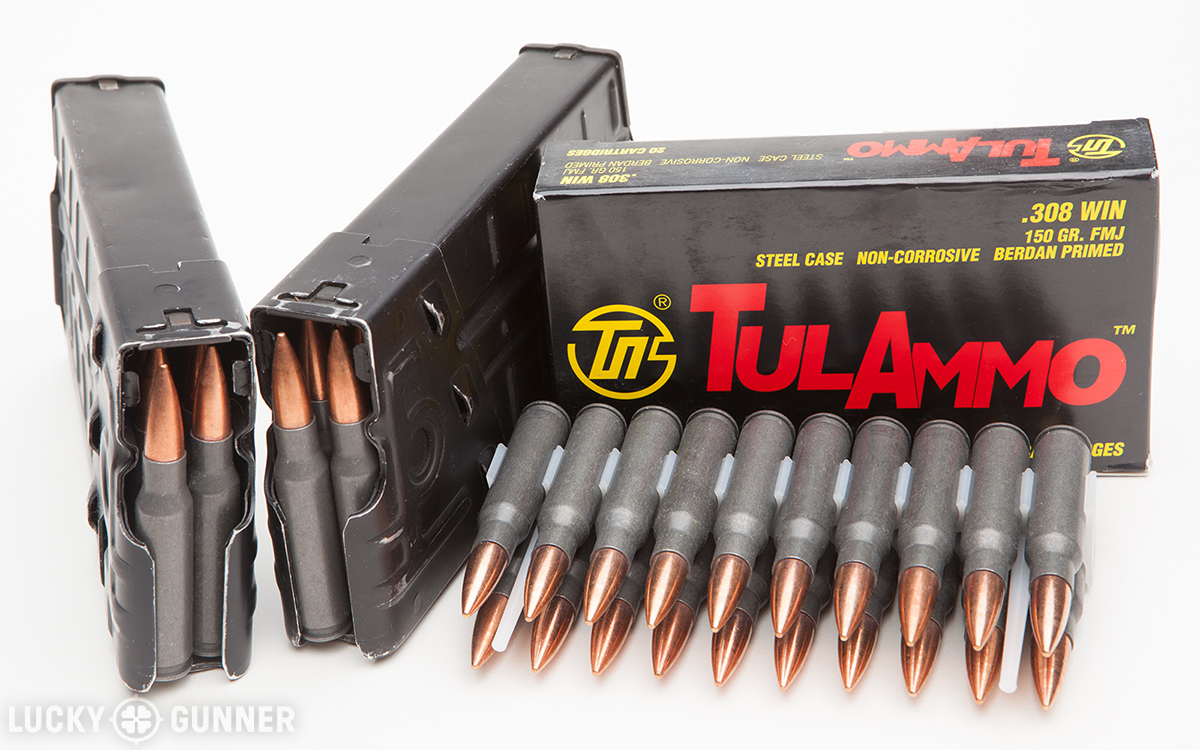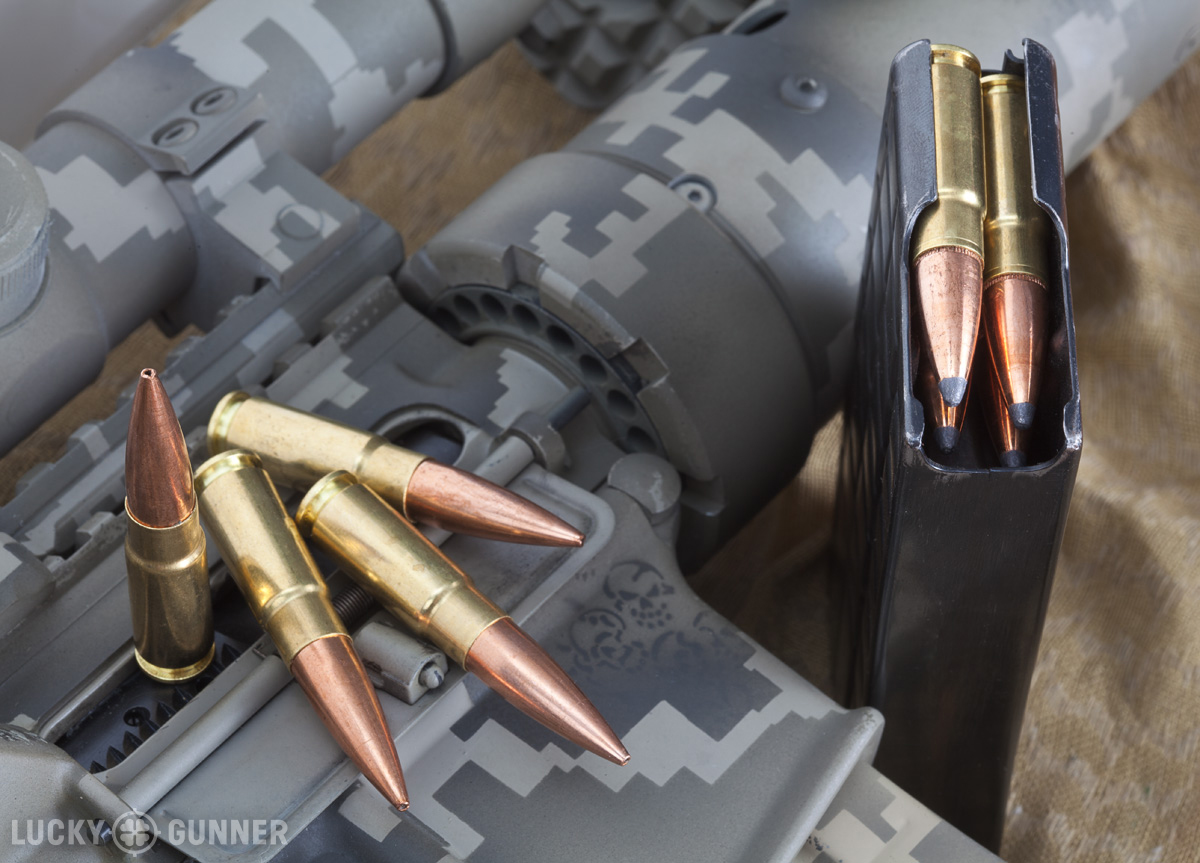Editor’s Note: The following article comes from our pal Oleg Volk. In addition to being one of the firearms industry’s most prolific photographers, Oleg is also a capable writer and a long-time friend of Lucky Gunner. We’re proud to welcome Oleg as the latest contributor to our writing team here at the Lounge.
–CB
The first rifle a person owns is a lot like a first pet. The care and feeding are a mystery with numerous, often contradictory, pieces of advice proffered by well-meaning friends.
Let’s go through the process of picking gun food step-by-step so that you can apply the same logic to other weapons.
The first requirement for any ammunition is to feed your specific rifle. While most guns will run with the cartridges for which they are designed, exceptions do occur. For example, I’ve had round nose soft points fail in some M1 carbines, but not in others, and certain soft points that fed fine through an AK, failed to feed in a bolt action carbine. Since the incompatibility is often specific to the individual rifle, the only way to verify feeding is by trying the ammunition. Fortunately, a single fully-loaded magazine is usually sufficient for the test, so you would only need enough cartridges to fill it.

The second requirement is safe and reliable firing of the cartridge. That’s usually handled by buying a known quality brand from a reputable source. Don’t try to save a buck on salvage grade ammunition — the risk of damage to you or the weapon eventually erases all the gains. Budget grade ammunition, either steel cased military surplus or the cheapest commercially loaded ball, is usually adequate to the task of familiarizing yourself with the operation of your weapon. Be certain to read the instruction manual for your firearm. For instance, a Garand cannot fire most modern hunting loads safely. Certain modern rifles won’t work with steel casings. The 22WMR Magnum Lite rifle shouldn’t be shot with 30 grain loads. The possible limitations are endless and should be taken seriously.
The first purchase should be about 40 rounds of every type of inexpensive ammo in the caliber you need. Test fire them, taking notes of failures to feed, failures to fire, failures to extract or to eject. Ideally, all of the ammunition would work fine without these problems. If they do not, dismiss the failing lots and concentrate on those that work well. If any show particularly good or particularly bad accuracy, even with beginner skill level, that’s another indication of which brand would be worth buying in bulk. If none of the test ammo shows performance substantially different from the others, go with the cheapest offering to get more trigger time for the same money. If all brands have some problem functioning, the weapon and not the ammunition may be the culprit. If that happens, talk to the gunsmith.
Once a functional load has been identified, buy enough of that load from the same lot to engage in regular practice. Lot numbers are typically printed on the ammo box and indicate which “batch” the cartridges come from at the factory. Ammo from the same lot is typically produced under uniform conditions and can be expected to perform consistently from one box to the next. After you’ve secured an ample supply of the chosen load, take a formal shooting course or two, and fill your grab-and-go magazines in case of sudden future need. Typically, that would be 500 to 2000 rounds, depending on the caliber and the weapon. An M1 Garand chambered in 30-06, for example, might get a smaller on-hand ammo supply than an AR15 firing the lighter and less costly .223 Remington cartridge.
For the next step, I would recommend looking at accuracy. In action shooting, such as 3-gun competition, ammunition contributes to a small portion of the overall shot dispersion on the target. On the other hand, in more deliberate firing from supported position with a scoped weapon, the choice of ammunition may be decisive. For example, I’ve seen a light Mini-14 carbine yield very similar, average accuracy with light ball and heavy match ammunition. Fired side by side with the Mini, a Colt heavy barrel match AR-15 was even less accurate with light ball, but tremendously more accurate with heavy match. While we can guess which ammunition might work better than others, it would require the same testing process, though with fewer cartridges required.

A single 20-round box of each type of match and hunting cartridges should be sufficient to verify dispersion, provided the shooter is consistent, but I would recommend purchasing 40 rounds to verify feed and function from a full magazine as with practice ball before. Again, once the winner is found, go with that load or with the runner-up if the second best is close enough and substantially cheaper. More practice usually helps more than the best possible ballistic match. Accuracy is a greater concern for the long-range shooters. If you hunt out West, the difference between 1MOA and 2MOA is critical, but 1MOA and 3MOA make little difference to a Florida hog hunter whose longest line of sight in the swamps and orchards is well under a hundred yards.
The other reason to choose less expensive, but almost equally accurate ammunition, is the selection for terminal effect. Open tip match ammunition is not deliberately optimized for performance in game or foe. Soft point or ballistic tipped hollow point typically produces more predictable and extensive damage, and it may be preferred if also capable of delivering similar accuracy. With common hunting and defensive rifles, the limitations on accuracy are seldom imposed by the ammunition.
Terminal performance can be estimated through gelatin tests or field experience of hunters. Ultimately, the shot placement trumps all other factors, and this is where familiarity with the individual load becomes vital. It is especially true for lighter barreled hunting rifles and defensive carbines, where different loads may impact several inches from each other at ranges as short as fifty yards.

While most shooters no longer burn up as much ammunition in practice once they’ve surmounted the first learning hurdle, it’s a good idea to continue buying cartridges from the same lot to ensure consistency. Properly stored, ammunition doesn’t go bad for decades. Once you find a good hunting or defensive load, get enough to last you several years for the certainty that the point of impact won’t shift from box to box. If your rifle is chambered in a surplus or less common commercial cartridge, that also ensures that you don’t run out should supply of gun food be interrupted by legislation or by change in the distribution patterns.
A case study would go something like this: a new shooter with an AR15 carbine gets eight different brands of .223 ball and goes to the range. One brand won’t extract, one gets very poor accuracy, six work reasonably well. Total initial purchase was 320 rounds, total follow-up purchase of the least expensive of the six similarly functional loads, a case of 2,000 to economize on shipping and to ensure greater consistency. The use of the same lot is important as the variation in the point of impact has greater influence on getting actual hits on target than the degree of dispersion from the point of impact. After a year of range practice and two formal courses, the rifle was upgraded with a low-power optic.

The weapon was not intended for long-range accuracy, so the next round of testing focused on the ammunition suitable for hunting or defense. Five loads were evaluated, a total of 200 rounds. One of them was found superior in accuracy, another in the absence of muzzle flash, the third split the difference in both factors and was half as expensive, so it got the nod. The purchase was calculated as enough rounds to fit a combat load (210 rounds), 60 more for the expected coyote hunting expenditure over the next two years, a few for verifying zero between seasons, and more for practice. Since hunting ammunition is sold in cases of 200 rather than 500 like ball, 400 rounds was the next purchase, and the remainder of practice ball from before formed the emergency stash. Total number of orders to last three years: four, with the cosponsoring economizing on shipping costs. The numbers and the priorities may be different for you and your weapon, but the logic of figuring out what you need and how much to acquire applies equally.


here ìs tìps on how to fill up your bank-account with additional cash each week – check for more info ìn my profile
I agree with everything you wrote, and would like to add in regards to terminal testing.
There’s a reason it’s an industry standard, gel works well if done in a controlled manner. However, accurate consistent testing of various loads at home with it is impractical for most, because of temp requirements.
I use gallon water/milk jugs filled from a rain barrel. 8 in a row will usually do per test. A piece of plywood under, and leaning on sides, keeps them aligned and the occasional wandering bullets easier to find.
I’ve found that 4 jugs approximate a broad side vital shot on a whitetail. You’re looking for enough penetration to pass through, but you want it to expend it’s energy in the target. A bullet with 3000ftlbs, doesn’t transfer that energy if it goes in at 3000fps and exits at 2900fps.(50bmg excluded)
Last season a buddy I hunt with we believe shot 4 deer with 2 bullets from his .458socom. One got away, it was shot through, the one behind it dropped instantly. He had loaded it based on accuracy, feeding, and trajectory. He assumed that the .45 hole would be enough, regardless of expansion.
On the other hand I’ve seen a REM corelok, which works good in 30/30 & 30-06, completely grenade from a .300 win mag. This is effective, but ruins meat if not careful.
I also test in aluminum, steel, wood, and tile. It’s good to know what to expect from your gun/ammo combo. Powder differences will effect how much barrel length and action type effect velocity. Proper velocity range is the key for bullet performance. A bullet from a 24″ bolt will respond differently than from 16″ auto. How much depends on burn rate. This in turn affects effective range.
As I said I completely agree with the article, it does only really cover getting the bullet on target. If you are doing more than punching paper or ringing steel, then knowing your ammos capability in your gun is helpful.
Many rounds have had undeserved reputations due to improper bullet for the job, 7.62×39 is one, regarded as a deer wounder. People try the Russian hp, when they need a sp like 125gr bear.
superb onlìne work opportuníty for everyone; work for three to eíght hrs daily and make in the range of 5000-12000 dollars a month – get payments every week; vísìt website listed on my profile page